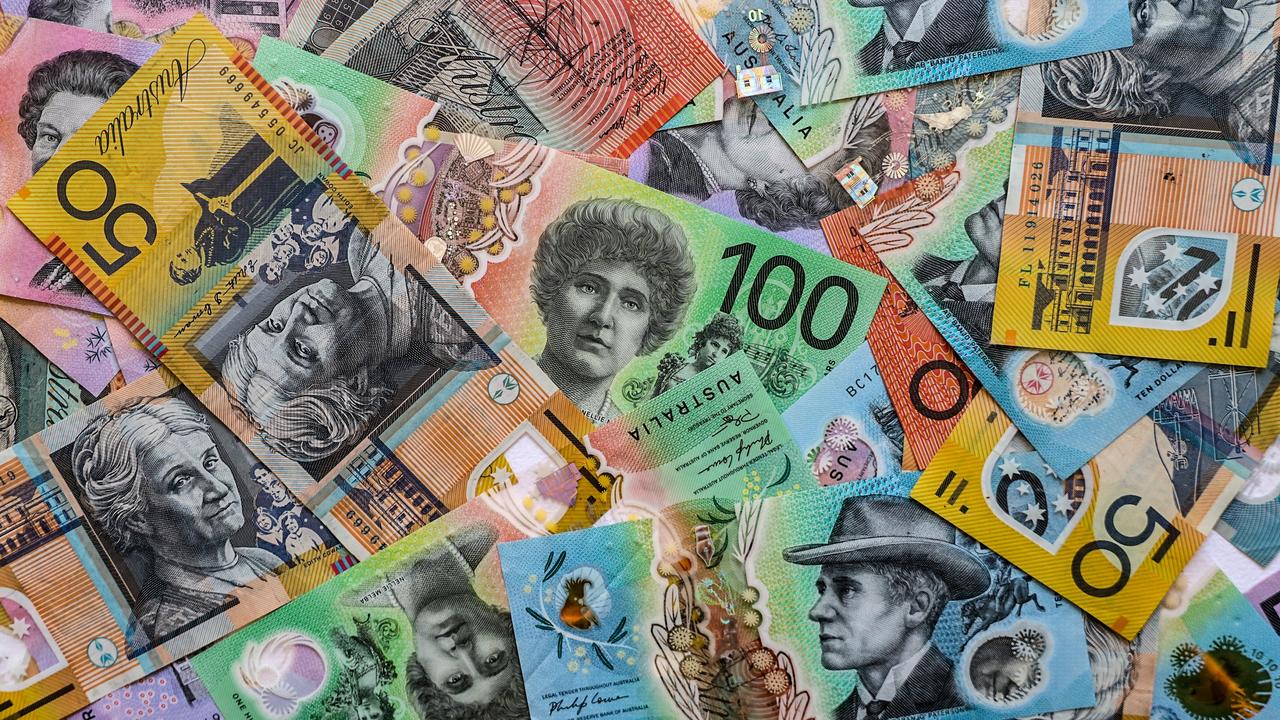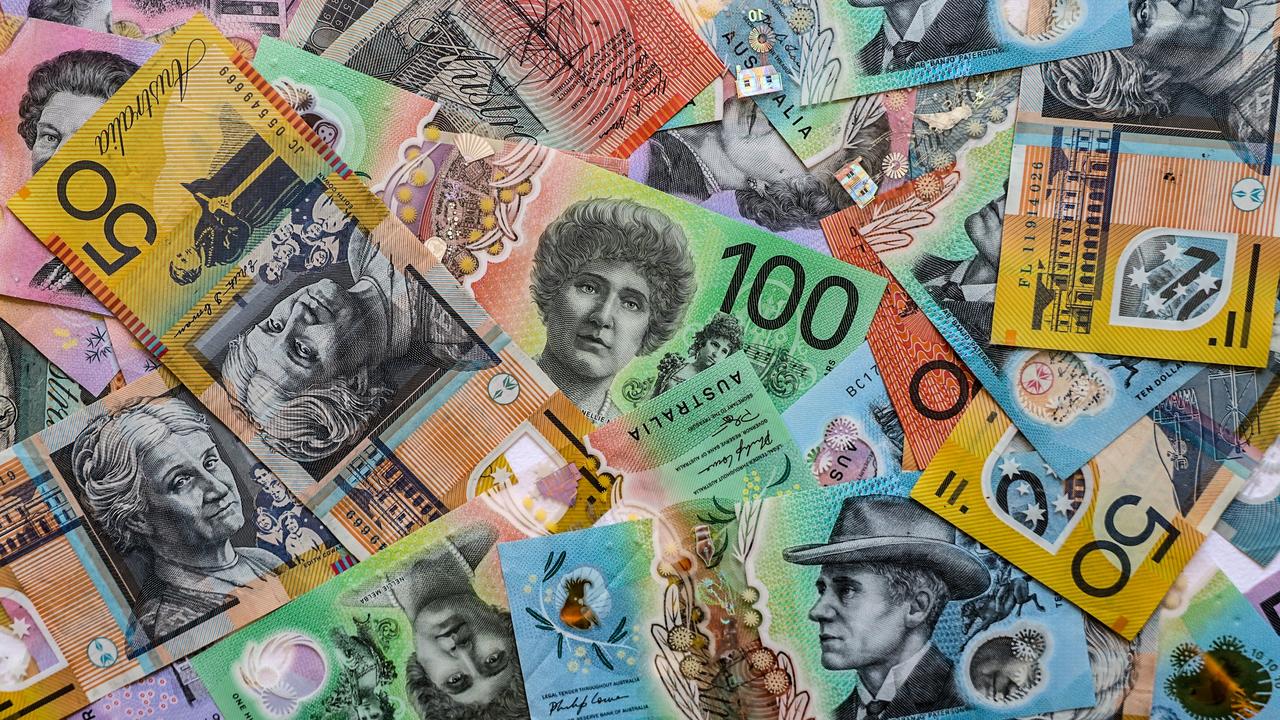‘Going to get worse’: Ben Fordham unleashes over rising power bills
An angry Ben Fordham has slammed Anthony Albanese and Chris Bowen over rising power bills – warning Aussies it is “going to get worse”.

Radio presenter Ben Fordham has slammed Prime Minister Anthony Albanese and Energy Minister Chris Bowen over rising energy costs.
The 2GB host told listeners on Wednesday he hoped they were sitting down as he delivered the news their power bills were likely to “skyrocket”.
He referred to new figures from the Australian Energy Market Operator that showed wholesale prices averaged $133/MWh this June quarter across the National Energy Market, which was 23 per cent higher than $108/MWh in the same quarter last year. The National Energy Market does not service customers in Western Australia or the Northern Territory.
“This is worrying news because wholesale prices set retail prices, so when wholesale prices go up 23 per cent, you can expect your power bill to go up by 23 per cent too,” Fordham said on his radio show.
“Can you afford that? At the moment the average annual power bill is about $1300.
“So if we’re right and [household] power bills go up by another 23 per cent, the average power bill in Australia will skyrocket to $1600. Households will be up for another $300 a year.”
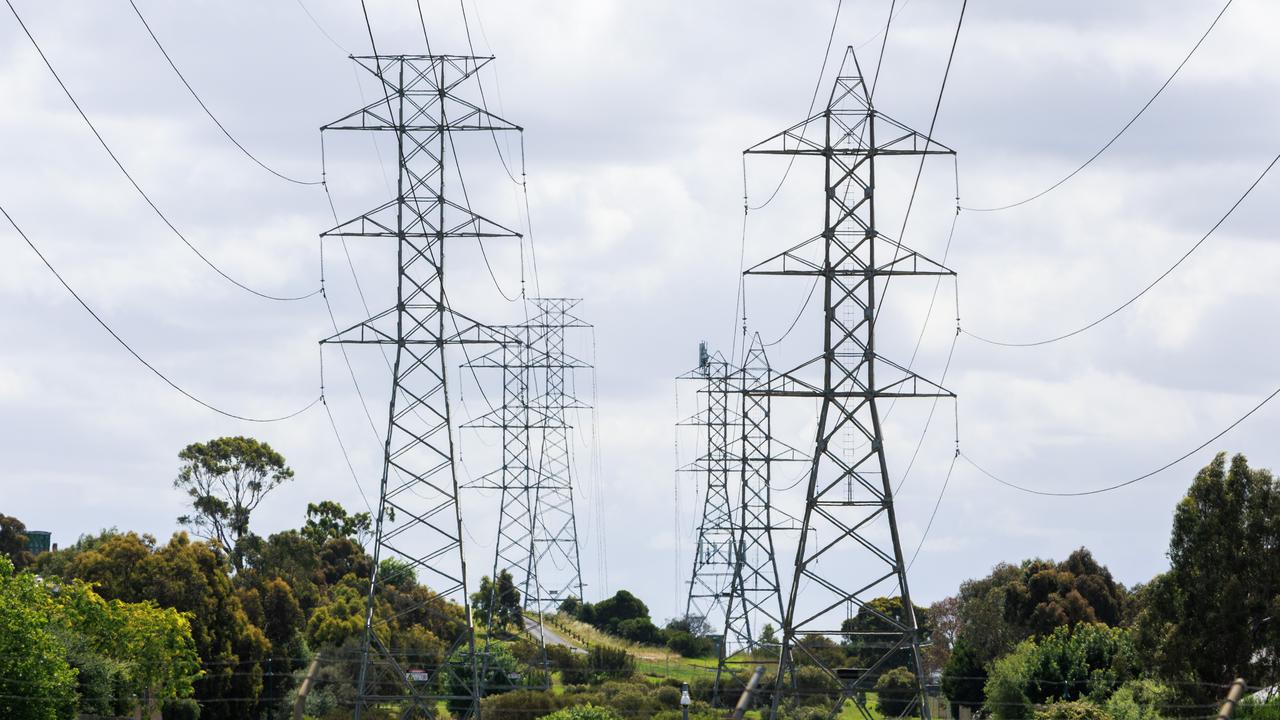
The Australian Energy Market Operator (AEMO) noted low wind and reduced rainfall in the southern regions where hydro-generation is heavily concentrated meant decreases in electricity supplied from wind (-20 per cent) and hydro (-18 per cent), while gas (+16 per cent) and black coal (+7 per cent) rose.
Fordham described the data as showing gas-fired power generation and coal had “picked up the slack” to keep Australia running, and criticised governments who he said had “held back new projects” for the former and “demonised” the latter.
“Under Chris Bowen’s leadership, power bills have not gone down by $275 as Anthony Albanese promised, they’ve gone up by about $300 and now the bad news is, they’re going to get worse,” he said.
The $275 promise refers to Labor’s election promise to bring down household power bills by $275 by 2025. Mr Albanese had said increasing renewable energy was “the best way” to cut these bills.

Fordham warned: “If you’re already struggling with power bills, avoid the inbox or letterbox because I’m sorry to say there’s bad news coming.”
But Mr Bowen’s office argued it was not an increased reliance on renewables driving prices up and this was in fact doing the opposite.
“The data shows renewables provide cheaper power, and when we’re forced to rely on coal generation and ageing unreliable assets, it drives prices up,” a spokeswoman for Mr Bowen said.
“The faster we can get more reliable renewables into the system, the better it will be for energy bills and energy reliability.”

The statement from Mr Bowen’s office took aim at the Coalition’s controversial nuclear energy plan.
“Peter Dutton’s anti-renewables nuclear plan ignores the need for more low-cost reliable energy supply now,” the government spokeswoman said.
“Instead, he wants to pause new cheap, clean renewable generation, and push our ageing, increasingly unreliable coal fired power generation fleet harder for another two decades on the off chance he might be able to build a small amount of nuclear power.
“Ultimately it will be the Australian taxpayer who pays for his nuclear frolic in higher taxes and higher bills.”
The spokeswoman said the government was helping companies build “cheap, clean renewables by 2030, as well as massive amounts of new battery storage capacity to put downward pressure on prices”.
“Already we’re seeing batteries doing about twice as much heavy lifting this quarter as the same time last year,” she said.
The government announced in May it would provide a $300 energy bill rebate to all Australian households. The credits will be applied in quarterly instalments from July 1, 2024.
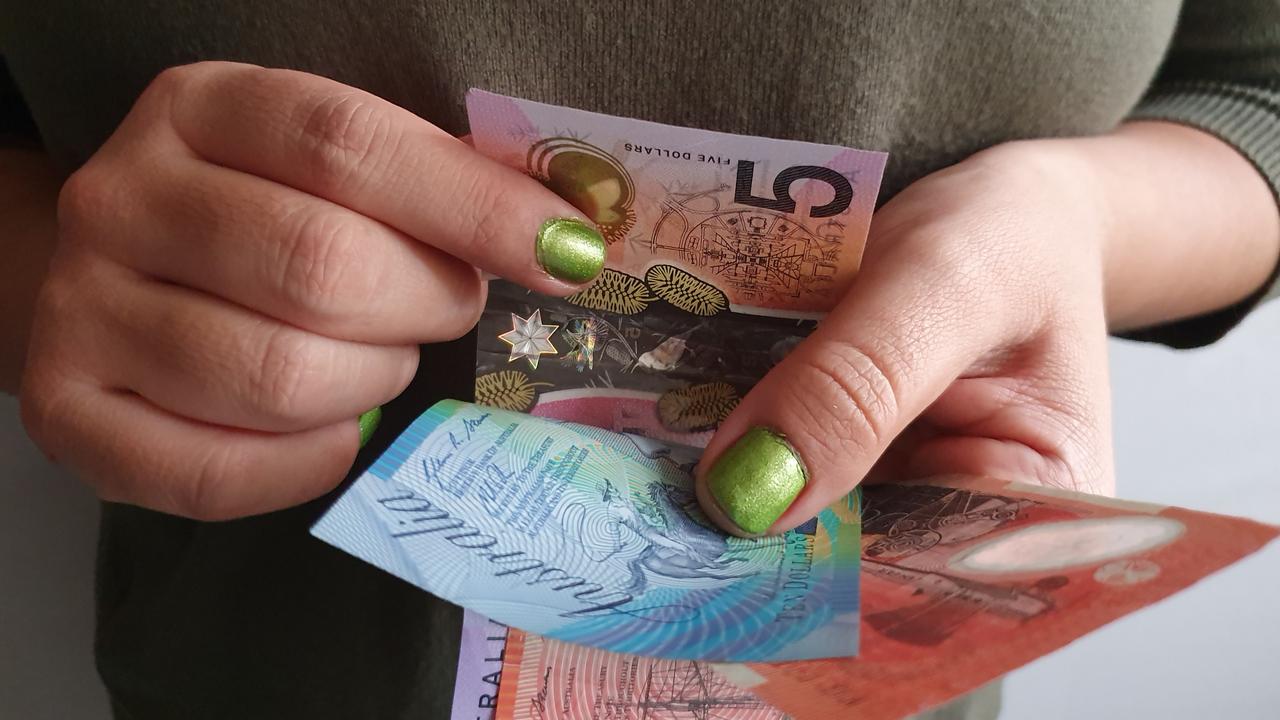
Low wind speeds and reduced rainfall
AEMO CEO Daniel Westerman said low wind speeds and reduced rainfall in the June quarter (Q2, 2024) came at a time when cold weather was driving electricity demand.
“Colder weather has driven a new record for total electricity demand in the National Energy Market for the June quarter,” he said.
“On the east coast we have seen low temperatures and persistent cold snaps, especially in Victoria, which have driven higher morning peak demands through the tail end of autumn and the first month of winter.
“Extended periods of low wind have led to reduced wind generation output which was down 20 per cent from last winter to a quarterly average of 2657MW, with wind availability down to their lowest levels since Q2 2017.”
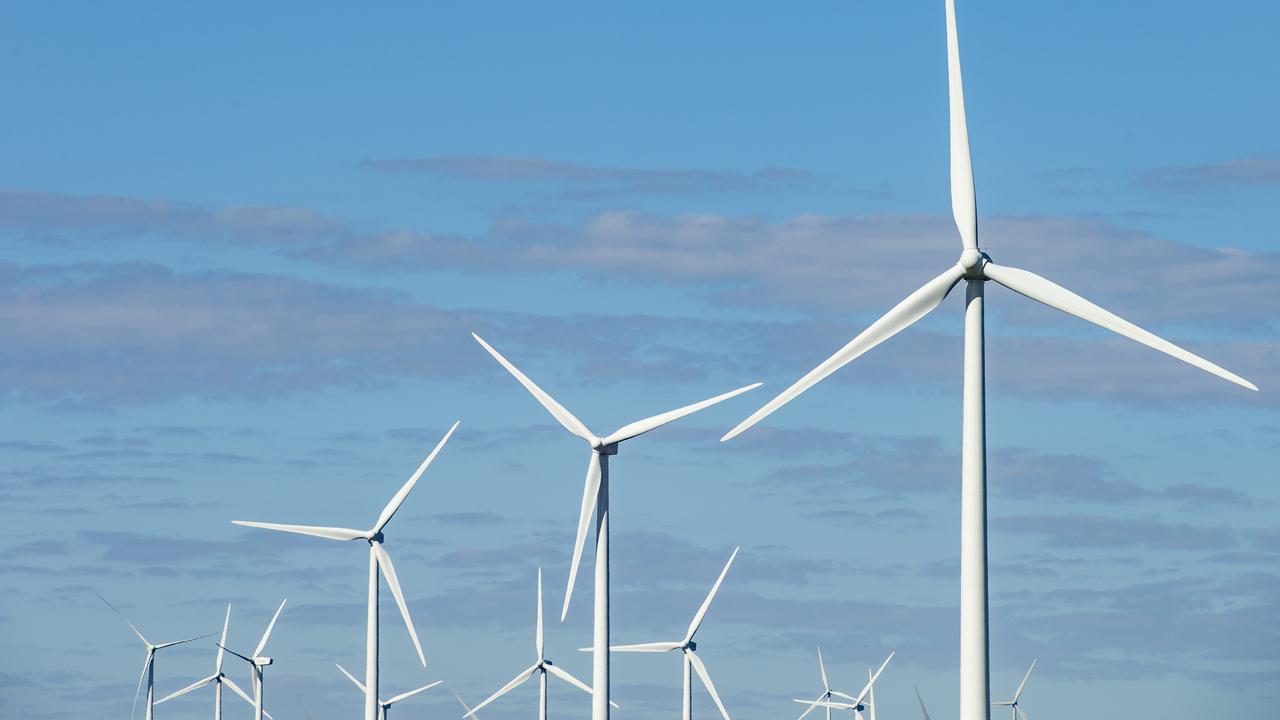
Mr Westerman said hydro-generation also generated less during the quarter, averaging 1607MW, a reduction of 18 per cent from last year and the lowest output for a Q2 since 2017.
“These market conditions highlight the important role that batteries, pumped hydro and flexible gas generation will play as renewable generation becomes more dominant in Australia’s electricity grids,” he said.
“The role of batteries in supporting morning and evening demand peaks became more prominent, with average generation in those periods more than doubling since last year, reflecting the significant increase in battery capacity.”
Australian Energy Regulator board member Jarrod Ball explained many factors helped push prices up during the quarter.
“While we would expect to see wholesale prices rise as weather in southern states cools and demand rises to keep people warm, the combined impact of cold snaps, planned and unforeseen network outages, combined with rebidding and lower solar and wind output has pushed electricity prices higher than this time last year,” he said.
Energy regulator announces lower price caps
The Australian Energy Regulator’s final default market offer (DMO) – a price ceiling to ensure customers receive the lowest price possible – was released in May, lowering the maximum amount electricity retailers can charge households in NSW by up to $28 to $2499, and in South Australia by $63 to $2216 from July 1.
These figures do not include the $300 household energy rebate, meaning bills will be a further $300 lower than the default price.
While the default offer in southeastern Queensland has increased by up to $83 to $2052, this increase will be more than offset by the federal government’s rebate and an additional $1000 subsidy announced by the Labor state government.
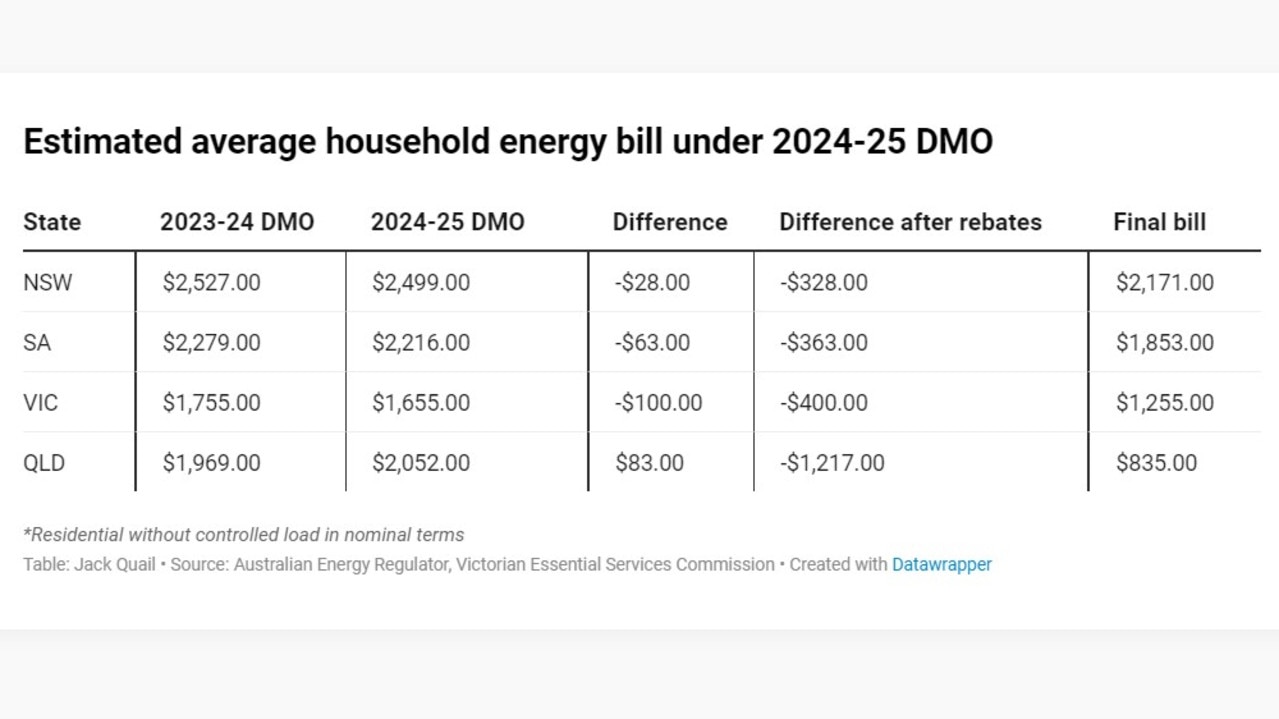
In Victoria, where the default market offer is separately set by the state’s Essential Services Commission, prices for households will fall by up to 5.7 per cent, or $100, to $1655, before the $300 reduction is applied.
In each state, between 8 and 12 per cent of households are signed up to the default market offer, representing almost 500,000 customers.
However, the default offer will indirectly impact many more households as major retailers, like Origin Energy and AGL, use the state specific caps as a benchmark to determine the final prices set for the rest of their customers.
– with NCA NewsWire




